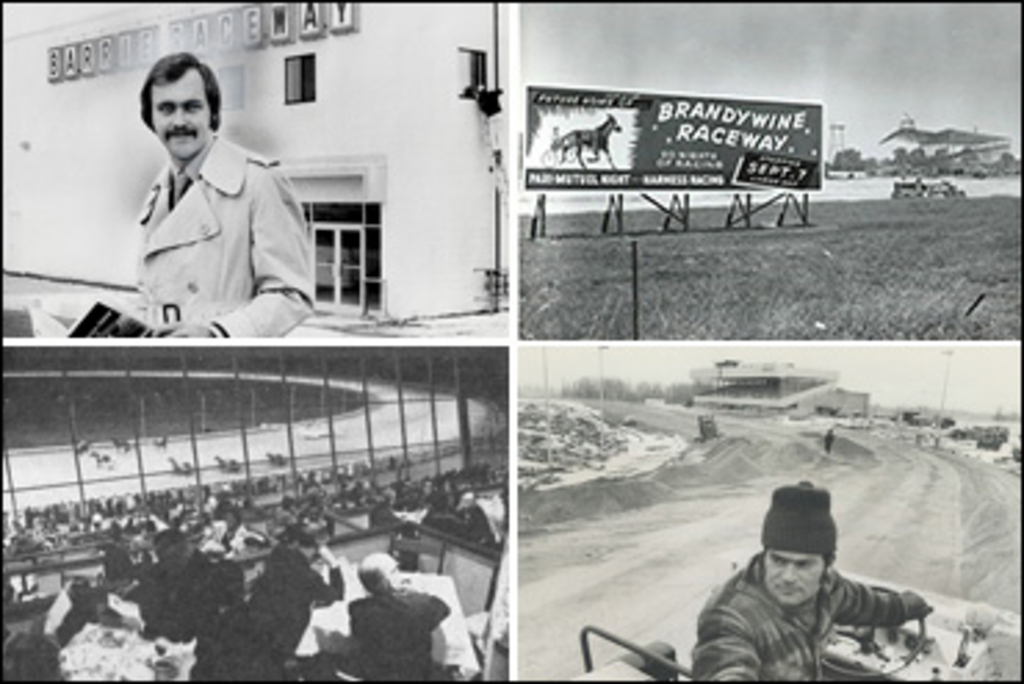
In this week's Rewind Robert Smith harkens back to the days when new Racetracks were being constructed across the Continent. He recalls the many new ventures that created increased opportunities for those who raced horses and excitement for those who watched and wagered. As usual, a number of old photos help to recall the times. It was a great time in the history of our sport, and one worth recalling with pride.

Construction of a brand new track is beginning to appear in this photo. Visible in the background are the first stages of the grandstand as the architects and engineers check their plans. This scene occurred with regularity at one time as more and more new tracks sprung up to meet the growing needs of the sport. This photo is from Brandywine Raceway in Wilmington, Delaware. That track opened in 1953 and unfortunately closed in 1989 and was demolished a few years later. Today like most of the great tracks of the past, nothing remains of this once grand facility.
I recently read a post on the Standardbred Canada website announcing the opening of the new season of harness racing at Saratoga Springs, New York. I was a bit shocked to learn that this will be the 76th year for the "Spa" track. When it opened back in 1941, it was the first brand new track built to stage night racing. A few others had preceded it with night time racing, but they were rebuilt or refurbished tracks retrofitted to accommodate what was then a completely new dimension in harness racing. Imagine racing under the lights!
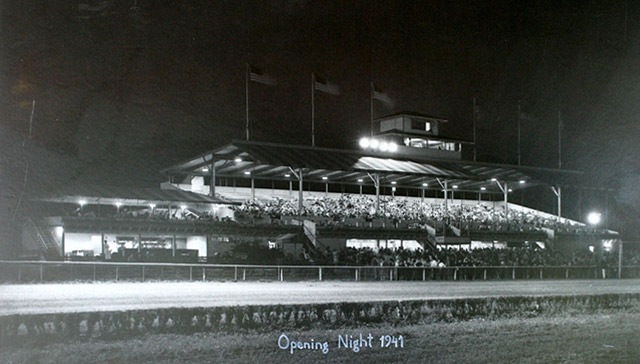
Opening night at Saratoga New York as a full grandstand welcomed harness racing under the lights
As I pondered on the subject, I realized that for several decades scores of new tracks sprang up across the Continent. Each was built with great visions in mind, hoping to be more successful than those that preceded them. The building of a new racing facility was a complex undertaking. It required intense planning, tremendous dedication by those who served as it "architects" and above all it was a very costly endeavour. A spot like Mohawk was built on a plot of land in excess of 400 acres. Many attempts were met with opposition; some based on local zoning and building restrictions, others because people simply didn't want a racetrack in their backyard. A few attempts didn't get off the ground but in many more instances, the principles persevered and succeeded.
Despite all of the pitfalls, hassles and bureaucratic struggles, tracks got built and many were beautiful spots. They were much more than just a racetrack, they were in effect self-contained communities. Back then tracks needed a lot of facilities. Backstretch restaurants, blacksmith shops, tack shops and living quarters. Trailer parks adjacent to the track came along as mobile homes were introduced. They became showplaces and in time even landmarks, each taking their place in the sport's long history.
The tracks of old were fairly big employers in several areas of their operation. The backstretch area provided jobs for many people as trainers, grooms and countless other related service personnel. On the track side many more worked in a multitude of tasks from the mutuels to dining, security and maintenance staff. In a recent conversation with a veteran horseman he theorized that it was quite possible that tracks employed from 400 to 600 full and part-time people.
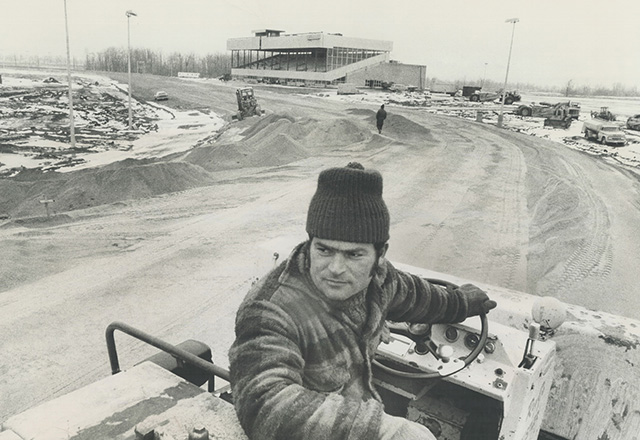
The above scene shows the very beginnings of the Flamboro Downs track which opened at Dundas, Ont. in 1975. It was a bit of a departure from recent track builds as it featured the traditional half-mile racetrack with some very new design features intended to make it safer and faster.
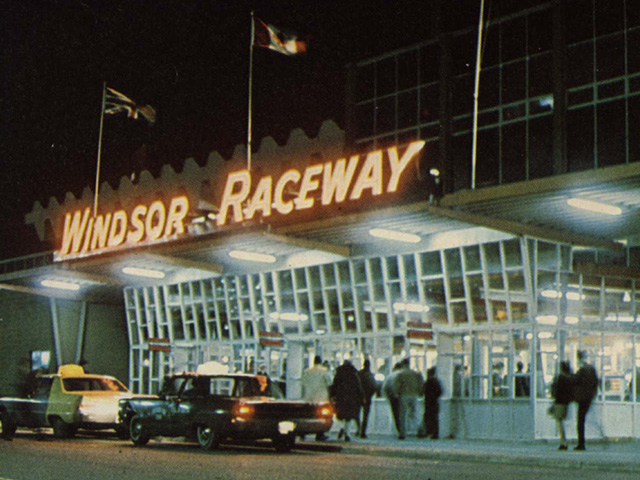
Patrons hustle into Windsor Raceway to take in the evening's action. Windsor, complete with a tartan track, became the first facility designed for winter racing. It opened in the fall of 1965 and was an instant success. In the early years it drew many of its patrons from across the border in Michigan where winter racing had not yet begun. (Hoof Beats)
The joy of seeing a new track take shape is an exciting experience. I can personally recall being in attendance at newly-opened facilities like Mohawk, Garden City and Windsor Raceway and being in awe of how nice they were. Another spot that led the way for Ontario's surge was Rideau Carleton, which opened in early fall 1962. With the tremendous building boom came new designs as track builders and designers realized that patrons wanted to not only watch the races, they also wanted to be wined and dined. As time went on, more emphasis was placed on backstretch facilities too. Those who tended the horses and worked behind the scenes were finally being recognized.
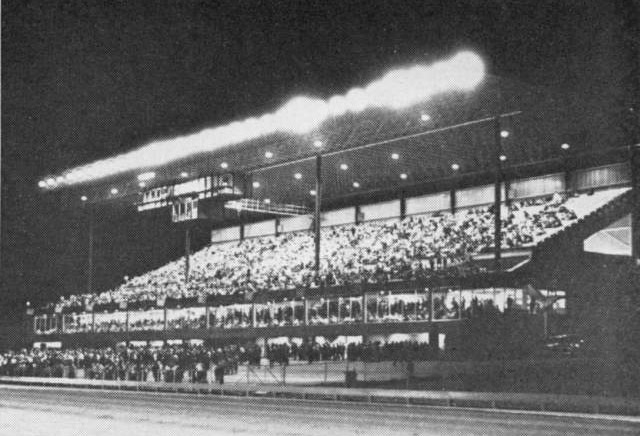
On Sept. 1, 1962 Rideau Carleton the first new track of the decade to be built in Ontario opened and here is how it looked on that opening night (Hoof Beats)
Then came the era of clubhouses being an integral part of every track. This came with glassed-in and heated and air conditioned facilities, valet parking, escalators, betting messengers, closed circuit TV's, better seating and a whole raft of creature comforts. Additionally better cuisine was introduced as people dined and consumed alcoholic beverages while viewing the races. The days of sitting on old badly worn wooden benches and huddling around a coal burning stove (like at Dufferin) soon became a distant memory. It was a new era that would thrive for many joyful years.
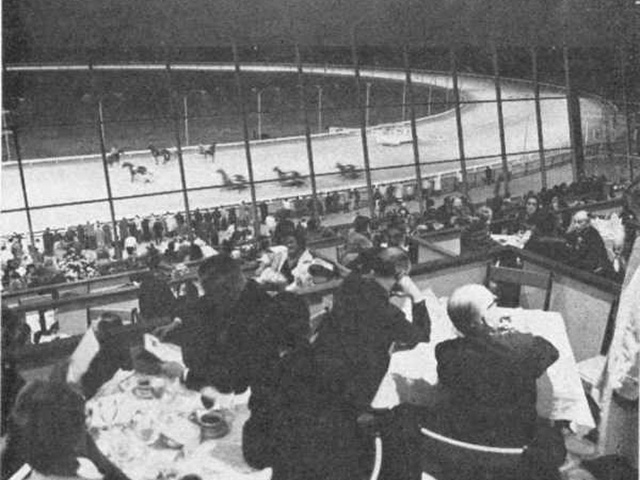
Above is a view of the newly built Garden City clubhouse which opened in the fall of 1964 as the third operating facility of the O.J.C. During this time period the importance of this part of any racing facility was paramount. People learned the joy of dining while watching the races.
I can vividly remember the joy of attending the races back in this time period. People lined up to get in and often again to leave. They gladly paid to park their cars, then anted up for an admission charge and finally purchased a program. Next came the challenge of finding a good seat. The night or afternoon of racing provided all of the entertainment anyone required; no one needed a cell phone, a handheld computer or for that matter any other device to keep them from boredom. For many years track phones were locked out during the races; nobody could call in or out, no texting! How times change.
Unfortunately in today's world of racing, the thoughts of building any new tracks as we once knew them is not likely to happen. I am not that ingenious or creative in my thinking but I would guess that if a new track were to be built today it would bear little resemblance to those most of us remember. Who knows what all it would contain; undoubtedly the racetrack would be of minor significance and certainly no stables? It would probably feature fine dining, swimming pools, a golf course, major accommodations, casinos, shopping, and who knows what else...maybe an ice arena to showcase another of Canada's favourite pastimes?
It is fun and at the same time a bit sad as we look back at the tracks many people loved but are no longer here. The passage of time and the sometimes cruel hand of progress often robs us of the things and places we once knew. I think I needn't list all of the once great spots that were once great racing centres.
Shown below are a number of great old photos of various tracks proudly built during the great era of the mid 1950's thru the 1970's.
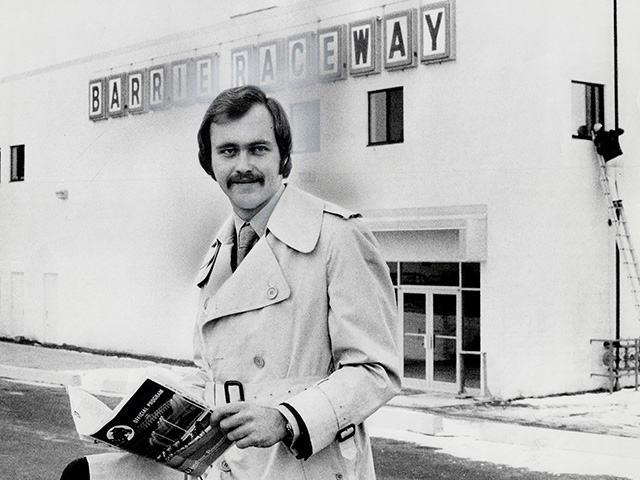
In 1973, eight years after the opening of the sport's premiere winter racing facility in Windsor, Barrie Raceway was built. It too was designed for winter action under the watchful eye of three generations of the Rowe family. Shown above just prior to its opening, General Manager Earl Rowe Jr. is shown outside the brand new facility. Visible in the background is a tradesman on a ladder putting some finishing touches on the grandstand and clubhouse.
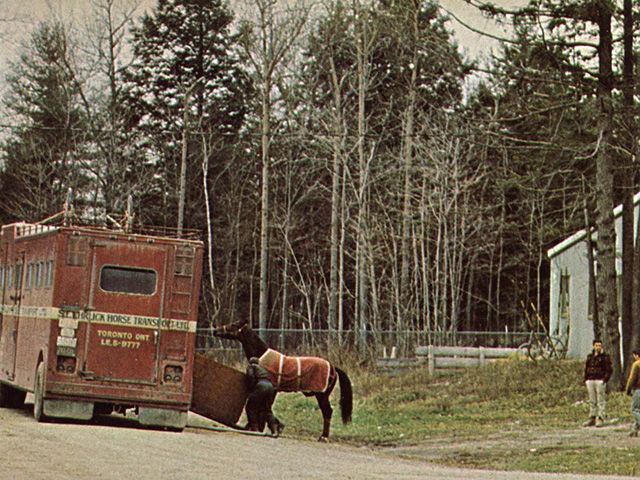
A horse is shown being loaded on an Ehrlick van on the wooded backstretch at Mohawk in Campbellville. This track opened in 1963 (Hoof Beats)
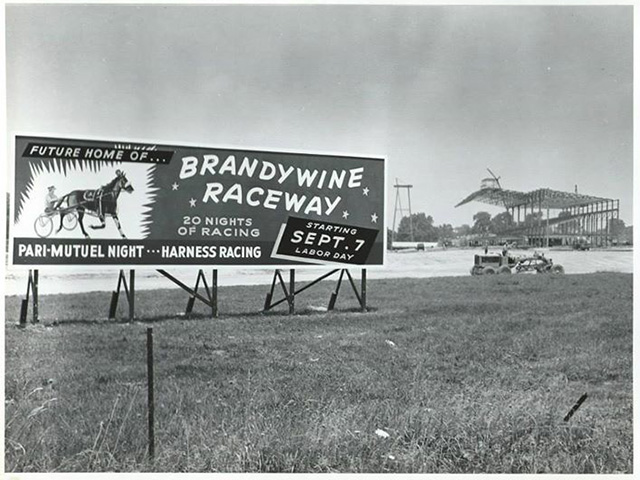
A large billboard sign announces the opening of yet another new track in 1953. This was a time of a great building boom in the U.S. as more and more tracks sprang up.
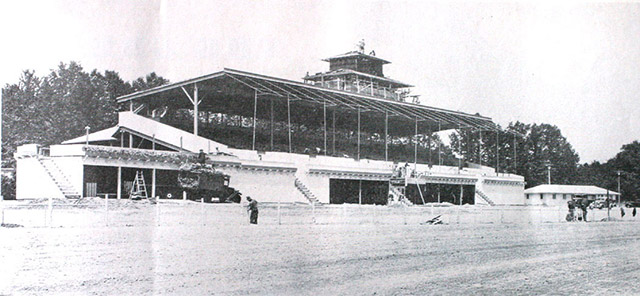
Shown above is the building of the new track at Saratoga which opened in 1941. It was the first new track built specifically for night time harness racing and continues to this day.


Again, you nailed it Robert.
Again, you nailed it Robert. Great memories of a bygone a recent bygone era.
Is this the same Doug
Is this the same Doug Courtney who had horses with Gerald Aikens?
I remember the rebuilding of Blue Bonnets, which is now being destroyed.
Beautiful yet sad article, I
Beautiful yet sad article, I got hooked into harness racing a little too late to enjoy its heyday. How I wish Garden City was still there instead of that God awful mega shopping mall, at least we have your great photos to reminisce ..
Great article Robert. Those
Great article Robert. Those were the good old years. I was fortunate to have been involved with the opening of Barrie Raceway in 1973. I remember going to help both Flamboro and Sudbury prior to their openings. Spent a lot of time with Bill Rowe and a Joe DeFrank at Windsor Raceway. Now it's gone. SAD.
Terrific pictures, so nice to
Terrific pictures, so nice to see. Brings back old memories.